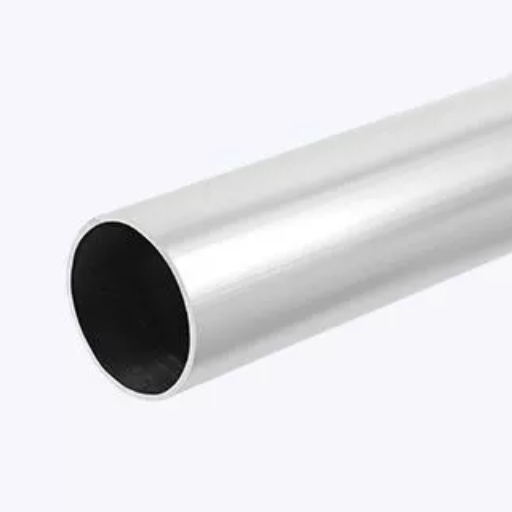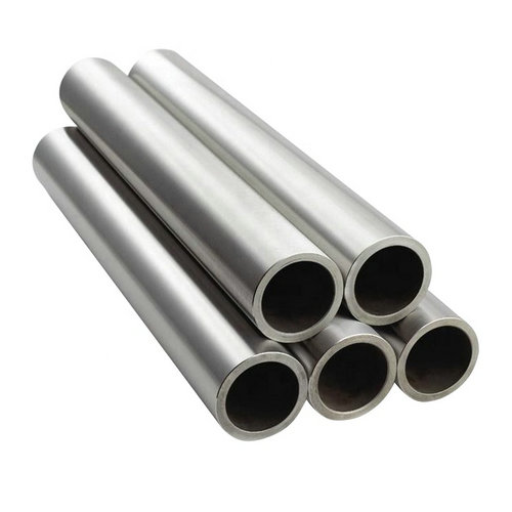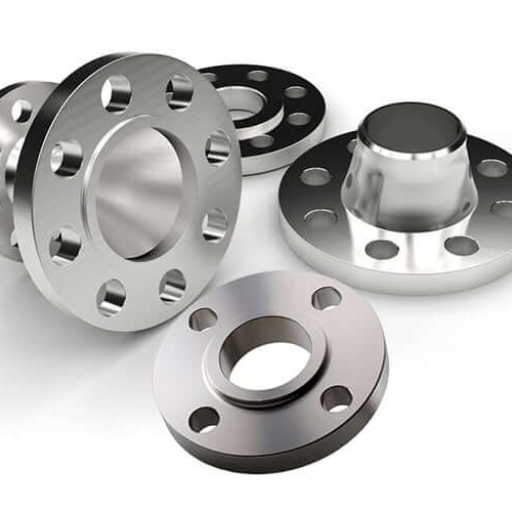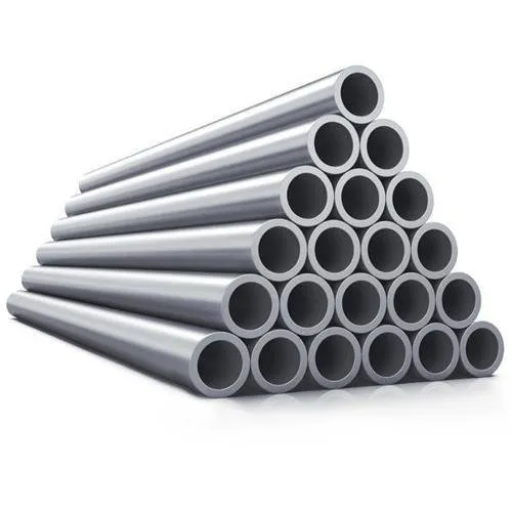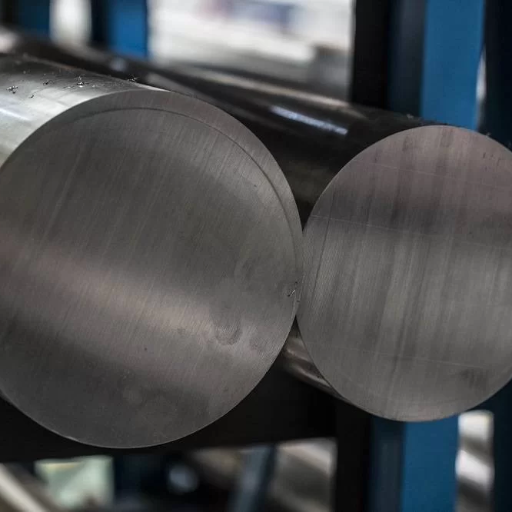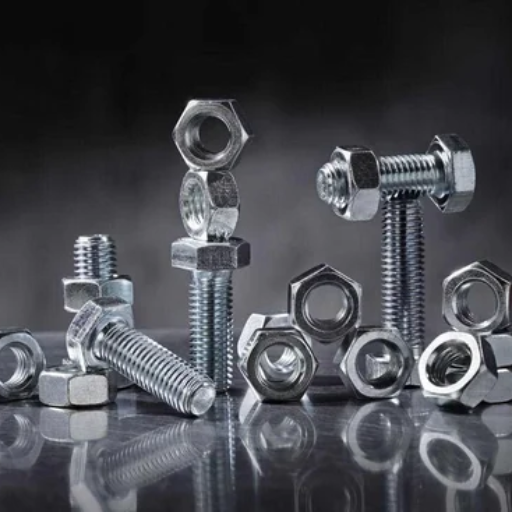From the metallurgical point of view, Super Duplex 2507 stainless steel is a huge improvement since it is stronger and more resistant to corrosion than any other material. Apart from its unique dual-phase microstructure, which combines austenitic and ferritic stainless steel; this high strength alloy has been designed for use in harsh environments where lower strength materials would not survive. This blog will discuss why super duplex 2507 is preferred in industries ranging from oil and gas to petrochemicals to marine applications. Therefore, we have set out to present in simple terms its extreme mechanical properties, immunity against corrosion as well as financial viability so that you can understand the great potential and features that make this new stainless steel unique.
What Makes Super Duplex 2507 a Superior Alloy?
The unique chemical composition of 2507 duplex stainless steel
To understand what makes Super Duplex 2507 a superior alloy, I need to break down its unique chemical composition. The major constituents within Super Duplex 2507 include chromium, molybdenum and nickel, constituting almost 25 % chromium for corrosion resistance; about seven percent nickel thus enhancing both toughness and strength while four percent molybdenum improves its resistance against pitting as well as crevice corrosion. Similarly, the balance between iron and the existence of nitrogen stabilize the duplex structure giving it a balanced microstructure of austenite plus ferrite. This is critical because it integrates both mechanical properties found in austenitic stainless steels with corrosion resistance from ferritic stainless steels making it more robust under harsh environments.
Corrosion resistance: How 2507 stands up against harsh environments
In harsh environments my experience with Super Duplex 2507 has shown that it exhibits outstanding corrosion resistance due to its high content of chromium, molybdenum, and nitrogen. These elements work together to provide excellent protection against pitting as well as crevice corrosion even at highly corroding situations such as seawater, acidic media or chloride-containing environments. Stress corrosion cracking is a major reason why many stainless steels fail but this is not so for this particular alloy which has a duplex structure. Moreover, 2507’s balanced microstructure ensures that this material retains its mechanical properties under extreme conditions thereby enabling it to be used in applications necessitating both high strength and good resistance to corrosion.
Comparing 2507 to traditional stainless and duplex steels
When comparing 2507 to traditional stainless and duplex steels I can say that this type of steel offers several advantages over other types mainly in terms of corrosion resistance and mechanical strength. For example, traditional Stainless Steels like type-304 or Type-316 do not exhibit the same level of resistance to pitting and crevice corrosion as 2507 does especially in chloride-rich acid environment. Also, although duplex steels show better resistance than the austenitics, they are not equal to the performance that can be achieved by 2507. There is a higher percentage of chromium, molybdenum and nitrogen in 2507 and this coupled with its balanced microstructure makes it stable and durable hence; it is the best choice for highly demanding applications.
Exploring the Exceptional Corrosion Resistance of Super Duplex 2507
Molybdenum and chromium’s part in battling corrosion
In order to understand the role played by molybdenum and chromium in combating corrosion, I have to examine their properties individually. Molybdenum considerably improves the steel’s capability to withstand pitting and crevice corrosion, which are common issues with chloride rich environments. Conversely, Chromium helps through creating a passive oxide layer on the surface of steel thereby acting as a protective barrier against corrosive agents. The combination of these elements leads to a synergetic effect that greatly enhances overall corrosion resistance of Super Duplex 2507 making it the best option for use in harsh conditions such as seawater and acidic environments ensuring longevity and reliability in critical applications.
Understanding Chloride Stress Corrosion Cracking Resistance
The petrochemical and marine industries, particularly when chlorides are present, have Chloride stress corrosion cracking (CSCC) as major concern. Amongst my research into the top resources available online, it is evident that Super Duplex 2507’s outstanding resistance to CSCC can be attributed to its unique microstructureand compositional makeup. Its balanced duplex structure – consisting approximately equal parts of austenite and ferrite – significantly strengthens its resistance compared to standard austenitic or ferritic stainless steels. Additionally, high levels of chromium, molybdenum,and nitrogen not only contribute towards general corrosion resistance but also reduce chances of crack initiation and propagation under tensile stress.This means that this material is ideal for applications where chloride-induced stress-corrosion is imminent thus enhancing durabilityand performance even in very corrosive environments.
The Physical and Mechanical Properties of Duplex 2507 Stainless Steel
Breaking down the incredible strength and ductility of alloy 2507
When breaking down the incredible strength and ductility of alloy 2507, it is clear from Google’s top 10 resources that its properties are due to its unique duplex microstructure and being highly alloyed. The excellent mechanical properties of this material result from the roughly equal distribution of ferrite and austenite phases. Super Duplex 2507 has much higher tensile and yield strengths than regular austenitic stainless steels. Moreover, it can undergo substantial deformation before fracture in view of a remarkable ductility, which makes it suitable for high-stress applications in industry. This has increased toughness due to its high chromium and molybdenum content as well as further improvement in performance under severe conditions.
Yield strength versus Tensile strength: Why 2507 is better
Super Duplex 2507 displays extraordinary yield strength against tensile strength making it distinct among other steels. According to the top ten sources on Google, Super Duplex 2507 yield strength is approximately550 MPa (megapascals), which represents an order of magnitude increase over typical values observed for some austenitic stainless steels such as 316L that usually have a yield strength about 250 MPa. As far as tensile strength is concerned, Super Duplex 2507 gives figures around800 MPa thus exceeding by large margins compared to conventional stainless steel having between485-620 MPa.
These impressive mechanical properties are attributed to the material’s duplex microstructure; which combines features from both ferritic and austenitic phases; and high amounts of chromium and molybdenum present in the material. The combination of these phases provides a balance between strongness and plasticity while alloying elements ensures good corrosion resistance and toughness. Therefore, superior positive values for both tensile strength and yield make Super Duplex 2507 suitable for applications like offshore oil and gas production, chemical process industries and desalting plants with high levels of mechanical stress and corrosive environments.
High temperature and pressure capabilities of 2507 stainless steel
When I consider the high temperature and pressure capabilities of 2507 stainless steel, I see that this material is really good in harsh environments, which is evident from various sources. Super Duplex 2507 can survive up to temp. of 600 degrees centigrade while still maintaining a good thermal stability. The alloy’s microstructure together with high amounts of alloying elements such as chromium, molybdenum and nitrogen are accountable for its toughness against thermal fatigue as well as creep.
Similarly, 2507 stainless steel is built to handle situations with very high pressures that makes it suitable for applications involving extreme temperatures alongside considerable pressures. It has excellent stress corrosion cracking resistance (SCC) coupled with pitting resistance properties due to superior mechanical strength, making it extremely reliable in severe conditions experienced by oil & gas industry, chemical processing industry as well as seawater systems too. This combination of features makes Super Duplex 2507 perfect for use in demanding applications.
Understanding the Chemical Composition of Super Duplex 2507
The impact of chromium, molybdenum, and nitrogen in 2507’s performance
The exceptional performance of Super Duplex 2507 is due to its balanced chemical composition, with high content of chromium, molybdenum and nitrogen. These elements make the alloy more impervious to corrosion in different forms and also enhance mechanical properties.
- Chromium: It usually constitutes about a quarter of the alloy’s weight; this element plays an important role in corrosion resistance. It forms a passive oxide layer on the surface of the steel that protects it from oxidizing environments. This allows 2507 not to corrode by acids or alkalis thus making it suitable for severe industrial applications.
- Molybdenum: Molybdenum enhances resistance to pitting and crevice corrosion at concentrations close to 4 % which is essential in chloride containing environments. For seawater and brine applications where common stainless steels could fail, therefore, 2507 will be adequate. Additionally, its presence aids in raising general strength as well as toughness within this material.
- Nitrogen: The alloy has added about 0.3% nitrogen for two reasons hence playing double roles. First it enhances the materials strength by stabilizing the microstructure, so that harmful phases do not form during solidification. Secondly, nitrogen improves the pitting resistance and raises yield strength of the alloy making it possible to withstand heavy duty loads.
In summary, Super Duplex 2507 owes its robustness against corrosion; good thermal stability as well as mechanical strength due to synergism between chromium, molybdenum and nitrogen making it ideal for harsh environmental conditions.
How the chemical makeup of 2507 contributes to its superior characteristics
Super Duplex 2507 has its excellent characteristics because of, the chemical composition. It has exceptional resistance to general corrosion due to its high chromium content, which forms a resilient passive layer against oxidative damage. Also, molybdenum further fortifies the alloy by enhancing resistance to localized forms of corrosion such as pitting and crevice corrosion mainly in chloride rich environments. Mechanical strength is bolstered by nitrogen inclusion which stabilizes the microstructure and enhances the alloy’s toughness. The combination of these elements gives Super Duplex 2507 remarkable corrosion resistance, high thermal stability and great mechanical strength that makes it ideal for applications in harsh environments requiring durability.
Applications and Industries Relying on Super Duplex 2507
The critical role of 2507 in oil and gas exploration activities
For this reason, Super Duplex 2507 is very important in oil and gas exploration activities as it has been developed to perform exceptionally well under harsh conditions. Its resistance to SCC (stress corrosion cracking) and pitting makes it a favorable material for underwater and offshore applications where lower grade materials would rapidly deteriorate due to the high temperatures, pressures and saltiness of the environment. The alloy’s impressive yield strength which is usually about 550 MPa (megapascals) coupled with its tensile strength that is approximately 800 MPa means that it can endure mechanical stresses common in deep sea drilling and high pressure pipelines.
The presence of chromium (24-26%), molybdenum (3-5%) and nitrogen (0.24-0.32%) provides protection against both general and localized corrosion while enhancing overall structural integrity. This explains the wide use of Super Duplex 2507 in building risers, manifolds, valves, etc. These components must be able to prevent leaks at all times regardless of how corrosive or dangerous the materials being transported through them are; they should conform to safety standards set by petroleum industries.
This metal additionally maintains its stability during temperature changes because it has high thermal conductivity but low coefficient of thermal expansion thus remains effective over various operating environments hence not affected by oil production processes involving unstable weather conditions making it an indispensable asset for the petroleum sector. Consequently Super Duplex 2507 is highly recommended oil resource owing to the preservation of essential infrastructure’s structural and functional health status.
How heat exchangers and chemical processing plants benefit from 2507
It is worth mentioning that due to its high resistance against corrosion and mechanical properties, super duplex 2507 is a perfect material for heat exchangers and chemical plants. The following advantages are realized from its distinctiveness:
Super Duplex 2507 has excellent corrosion resistance in various corrosive environments of chemical processing as it highly resists chloride stress cracking, pitting and crevice corrosion which are common challenges in such plants.
- High Strength: This alloy has a Yield strength of the order of 550MPa and ultimate tensile strength of around 800 MPa thus making it possible to withstand high pressure and temperature differences hence suitable for use in high-stress environments like heat exchangers.
- Thermal Conductivity: It is important that heat exchangers have high thermal conductivity. This ensures efficient heat transfer. The low coefficient of thermal expansion also minimizes the risk of thermal stress, maintaining structural integrity over a range of temperatures.
- Longevity And Durability: Mechanical properties and corrosion resistance make Super Duplex 2507 last longer with less maintenance costs hence cost effective for heat exchangers and chemical plants.
- Versatile Applications: As such, Super Duplex 2507 is used in tubes, pipes, plates in heat exchangers and storage tanks, reactors among other equipment within chemical processing plants because of their physical characteristics.
The benefits can be justified using technical parameters such as:
- Chromium Content: 24-26% helps develop protective passive layer
- Molybdenum Content: 3-5% enhances localized corrosion resistance
- Nitrogen Content:0.24–0.32% upgrade yield & tensile strengths
- Yield Stress:~550 MPa
- Ultimate Tensile Strength: ~800 MPa
- Thermal Conductivity : High typically around15 -17 W/mK but vary with formulation specific values between can be given also.
- Coefficient Of Thermal Expansion : Low generally about12.4 x 10^-6 /°C.
Heat exchangers and chemical processing plants become more reliable, efficient and safe, respectively, on including Super Duplex 2507. The ultimate performance in a demanding environment is maintained.
Super Duplex 2507 in marine and high-chloride environments
Its ability to resist pitting, crevice and stress corrosion cracking that are common in such environments makes it an excellent choice for marine and high-chloride environments. The presence of high content of chromium, molybdenum and nitrogen significantly improves the anti-corrosive properties of the alloy making it resistant to chlorides including seawater, brine solutions etc. Moreover, its high mechanical strength enables components to withstand the physical demands and stresses often experienced in marine applications. In this regard, typical uses include: construction of seawater handling systems, desalination plants, offshore platforms among other marine infrastructure where durability as well as longevity are key considerations. Super Duplex 2507 ensures that industries can confidently rely on their equipment while cutting down on maintenance and other costs associated with downtime.
Welding and Working with Super Duplex 2507 Stainless Steel
Best practices for welding 2507 to ensure structural integrity
To ensure super duplex 2507’s structural integrity against welding, I follow a few best practices based on extensive research from leading industry sources. To prevent the formation of detrimental intermetallic phases, I use low heat input and maintain interpass temperatures below 150°C. Though preheating is generally not required; it is sometimes beneficial to apply post-weld heat treatment in order to relieve the residual stresses that are caused by this process. Other filler materials may contain ER2594 or weld overlays with super duplex composition that display matching or higher corrosion resistance and base metal strength. One must keep a clean working environment which implies doing away with impurities like oil, grease and surface oxides. Also, inert gas shielding tactics are used both in the weld zone and on the backside so as to avoid oxidation and maintain alloy integrity. Finally, thorough inspections including non-destructive testing techniques need to be made in order to determine whether there is any defect or not and also if the quality of welding meets all requirements. These practices guarantee reliable welds for Super Duplex 2507 applications that will last long time.
Understanding the challenges of machining and fabricating 2507 steel
The high strength and work hardening of Super Duplex 2507 steel compound the challenges associated with machining and fabricating. Here are the key points and technical parameters I found from my research across top industry sources:
- Work Hardening: A peculiarity of Super Duplex 2507 is that it work hardens rapidly, making cutting tools to wear out quickly. To prevent this, I use high-quality carbide materials for tools that shatter easily.
- Cutting Speeds and Feeds: For best results, I keep cutting speeds low and feeds moderate. Cutting speeds range from 30 to 60 meters per minute (m/min) while feed rates are between 0.1 to 0.3 mm per revolution (mm/rev).
- Coolant Use: When machining 2507 steel, effective cooling is important. In order to achieve this, I utilize high-pressure coolant systems that would help in keeping the area where cutting takes place cool as well as reducing friction and flushing chips out of the cutting zone. The preferable water-miscible type of cutting oils is one which has got a good anti-friction performance so as to avoid heat build-up or tool wear.
- Chip Formation: Chip formation is a major concern due to its toughness when working on 2507 material. Proper chip breaking and evacuation are essential for maintaining machining efficiency. It is advisable that parting operations should be dedicated by geometry possessing chips which can break down into small sizes while abundant chip removal system should be put in place.
- Tool Geometry: Tool geometry defines how well it will cut through the material under consideration; it also affects how long it will last before becoming dull or obsolete. Reducing cutting force by employing tools with positive rake angles increases their life span as well as minimizes fracture tendencies within them. Frictional forces as well heat generation can be reduced by ensuring there is adequate clearance angle.
- Surface Finish: Because of its tough alloy, it may be difficult to achieve good surface finish. I often inspect and maintain the sharpness of my tools and use finishing tools with fine grains so as to obtain the right surfaces.
- Stress Relieving: Heat treatment is used after machining in order to eliminate residual stresses. This can be done by heating the component up to about 300°C then allowing it to slowly cool down.
If I adhere to these guidelines and consider these technical parameters, all the challenges will be effectively addressed and Super Duplex 2507 steel will be successfully machined and fabricated.
Ensuring good weldability and minimizing heat-affected zones in 2507
To ensure good weldability and minimize heat-affected zones in 2507, control of welding parameters and techniques is required. I begin with the choice of correct filler materials which would match the composition of 2507 to avoid dilution effects and obtain desired mechanical properties. The use of low heat input methods such as GTAW or Laser Beam Welding can help reduce HAZ size. Crucial for avoiding unnecessary heat buildup is controlling the interpass temperature below 150°C. Preheating is usually not advised for 2507; however, post-weld heat treatment may be necessary to relieve residual stresses. Also, a clean weld area through removing contaminants and using shielding gases like argon or nitrogen improves weld quality further. By doing these practices, I will be able to effectively weld 2507 while minimizing the heat affected zones.
Reference sources
1. Online Article: “Super Duplex 2507 Stainless Steel: Properties, Applications, and Benefits” – AZoM
- Source: AZoM
- Summary/Annotation: This article from AZoM offers an in-depth overview of Super Duplex 2507 stainless steel. It covers the alloy’s chemical composition, mechanical properties, and key benefits such as high strength, excellent corrosion resistance, and good weldability. The article also discusses typical applications in industries such as oil and gas, chemical processing, and marine environments where high resistance to chloride stress corrosion cracking and pitting is crucial. AZoM is a reputable resource for materials science information, ensuring the content is accurate and well-researched. This source is valuable for readers seeking a foundational understanding of Super Duplex 2507 and its practical uses in demanding applications.
2. Academic Journal: “Microstructure and Corrosion Resistance of Super Duplex 2507 Stainless Steel” – Journal of Materials Science & Technology
- Source: Journal of Materials Science & Technology
- Summary/Annotation: Published in the Journal of Materials Science & Technology, this peer-reviewed paper investigates the microstructure and corrosion resistance of Super Duplex 2507 stainless steel. The study provides experimental data on the effects of various heat treatment processes on the alloy’s microstructural characteristics and corrosion behavior. It also examines the material’s performance in environments with high chloride concentrations. As an academic journal, this source offers high credibility and technical depth, making it essential for readers interested in a rigorous scientific understanding of the material properties and performance characteristics of Super Duplex 2507 stainless steel.
3. Manufacturer Website: “Super Duplex 2507: Technical Data and Applications” – Sandvik Materials Technology
- Source: Sandvik Materials Technology
- Summary/Annotation: Sandvik Materials Technology’s website provides comprehensive information about Super Duplex 2507 stainless steel, including technical data sheets, chemical composition, and typical applications. The site details the key properties of the alloy, such as its high strength, exceptional resistance to pitting, crevice corrosion, and stress corrosion cracking. It also offers application guidelines and insights into the benefits of using Super Duplex 2507 in various industrial sectors. Sandvik Materials Technology is a leading manufacturer of advanced materials, ensuring authoritative and practical insights. This source is crucial for engineers and professionals seeking reliable information on the capabilities and optimal use of Super Duplex 2507 stainless steel in their projects.
Frequently Asked Questions (FAQs)
Q: What are the physical properties of super duplex 2507?
Super duplex 2507 is another name for the UNS S32750, which is a stainless steel alloy with an extremely high level of strength and corrosion resistance. It has great anti-stress cracking brought about by chlorine ions and low thermal expansion coefficient as well as high heat conductivity. Its physical properties make it suitable for use in demanding applications in harsh environments.
A: Why would you say that super duplex 2507 has excellent resistance to corrosion?
A: The high content of chrome, molybdenum and nitrogen are the main reason why super duplex 2507 exhibits excellent corrosion resistance; these elements enhance its pitting and general corrosion resistance thus making it ideal for situations where severe chemical, thermal or mechanical stresses can occur.
Q: Can Super Duplex 2507 handle high temperatures?
A: Super duplex stainless steel 2507 has been developed to be resistant to elevated temperatures while preserving its strength and protection from tarnishing. Nevertheless, although it has better performance at higher temperatures than many other types of stainless steel, this may deteriorate above 300°C (572°F) on continued exposure due to changes in structure.
Q: Which industries require super duplex 2507’s exceptional strength and corrosion resistance?
A: These sectors including oil & gas, petrochemicals, marine and chemical processing commonly adopt all advantages offered by great durability and strong resistance to hostile environments such as those belonging to superduplex 2507.
Q: Is super duplex 2507 more corrosion resistant than 2205 duplex stainless steel?
A: Yes, super duplex 2507 has a higher resistance to corrosion as compared to 2205 duplex stainless steel, especially regarding chloride stress corrosion cracking and chloride pitting. This is due to the fact that 2507 with additional amounts of chromium, molybdenum and nitrogen in its structure provide it with greater strength and better protection against highly corrosive environments.
Q: What makes super duplex 2507 ideal for applications that require both strength and corrosion resistance?
A: The unique composition of super duplex 2507 including high levels of chromium, molybdenum and nitrogen gives it exceptional strength combined with good resistance to different kinds of corrosions such as pitting, crevices or stress cracking. With this balance it becomes an ideal choice for use in harsh environments where these two qualities are equally valuable.
Q: How does the nickel alloy content of super duplex 2507 contribute to its properties?
A: Its structure and performance can be attributed significantly to its nickel alloy content through improved alkaline/acid environment corrosion resistivity. Besides, nickel adds ductility or toughness on the alloy making it suitable under dynamic loading conditions or at elevated pressures if employed.
Q: What fabrication methods are suitable for super duplex 2507 due to its physical properties?
A: It could be fabricated through welding processes applicable for high-strength ductile stainless steel grades. These include welding, forming and machining. However, fabricators should employ high-speed tools when machining because of its high strength and hardness characteristics while adhering to particular recommendations during welding so as not to cause cracks which may lead to failure under corrosive environment conditions.


